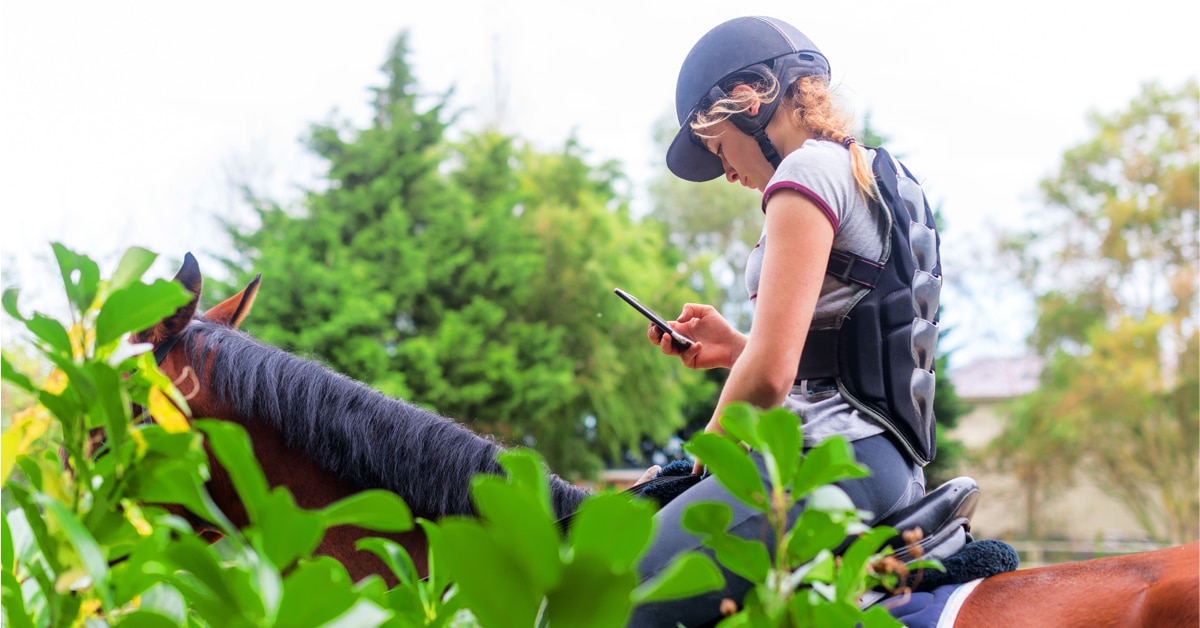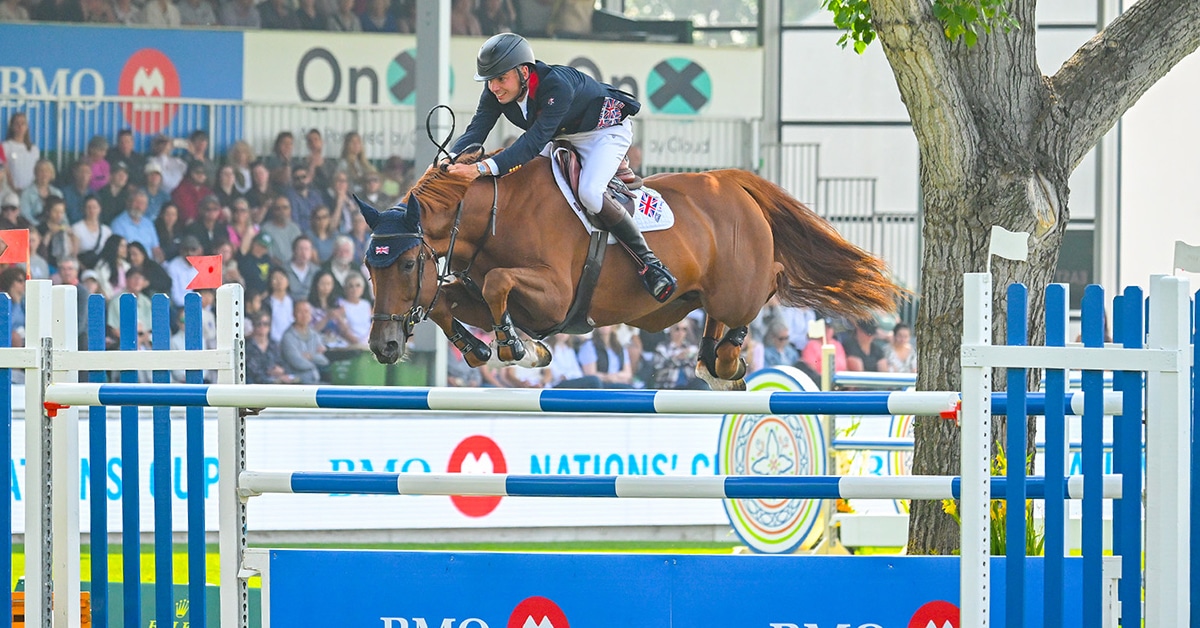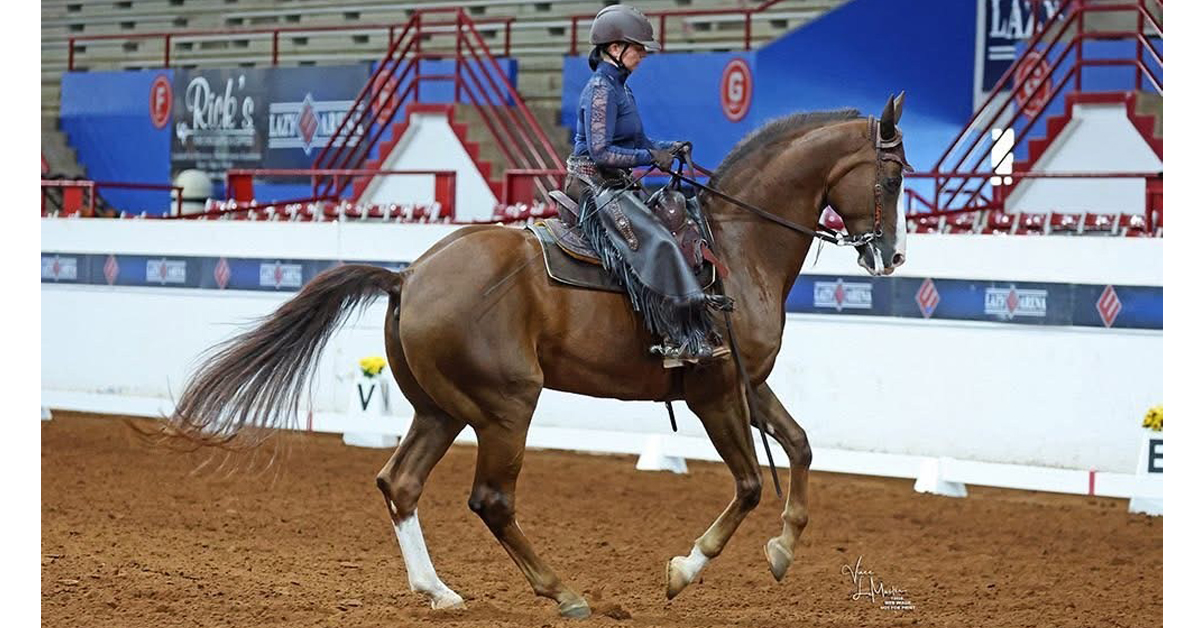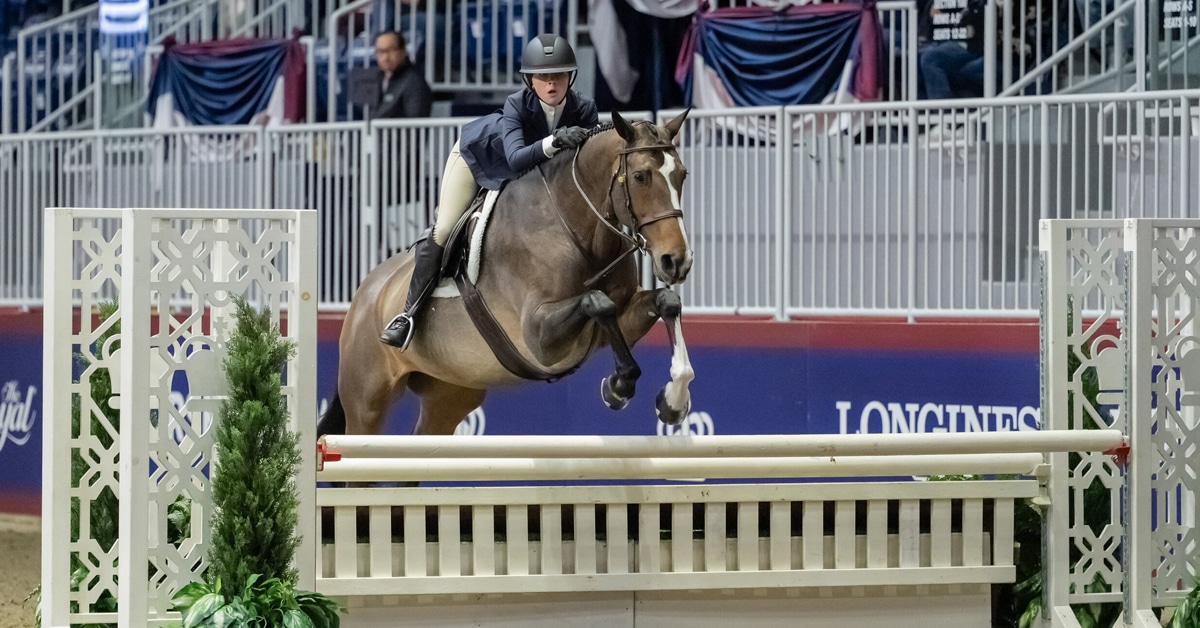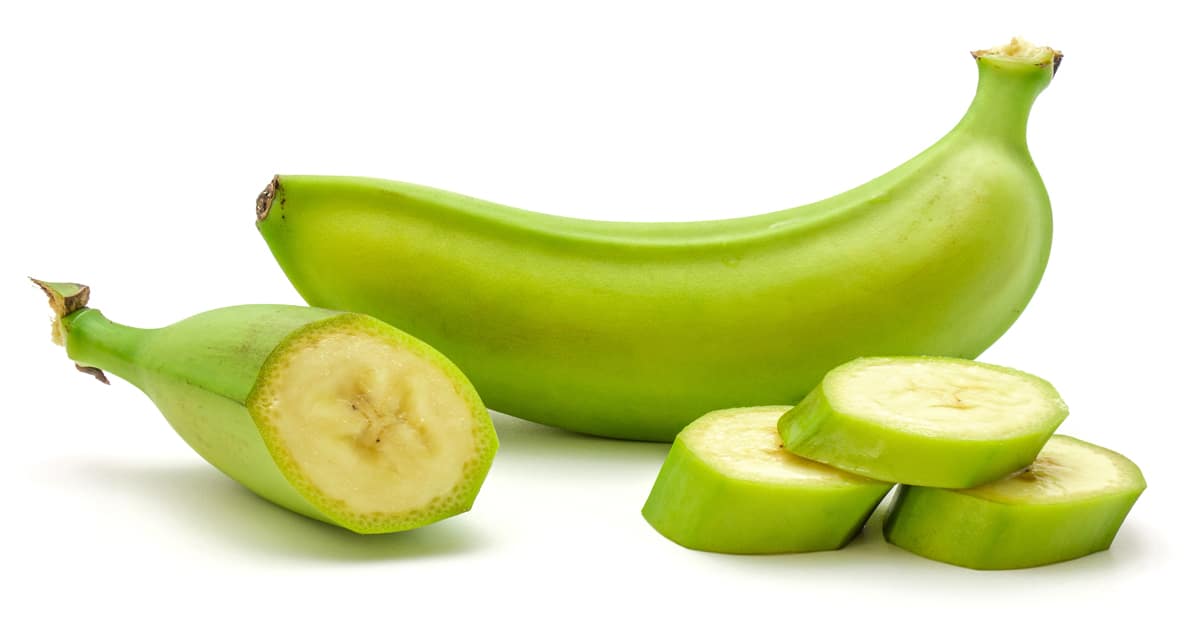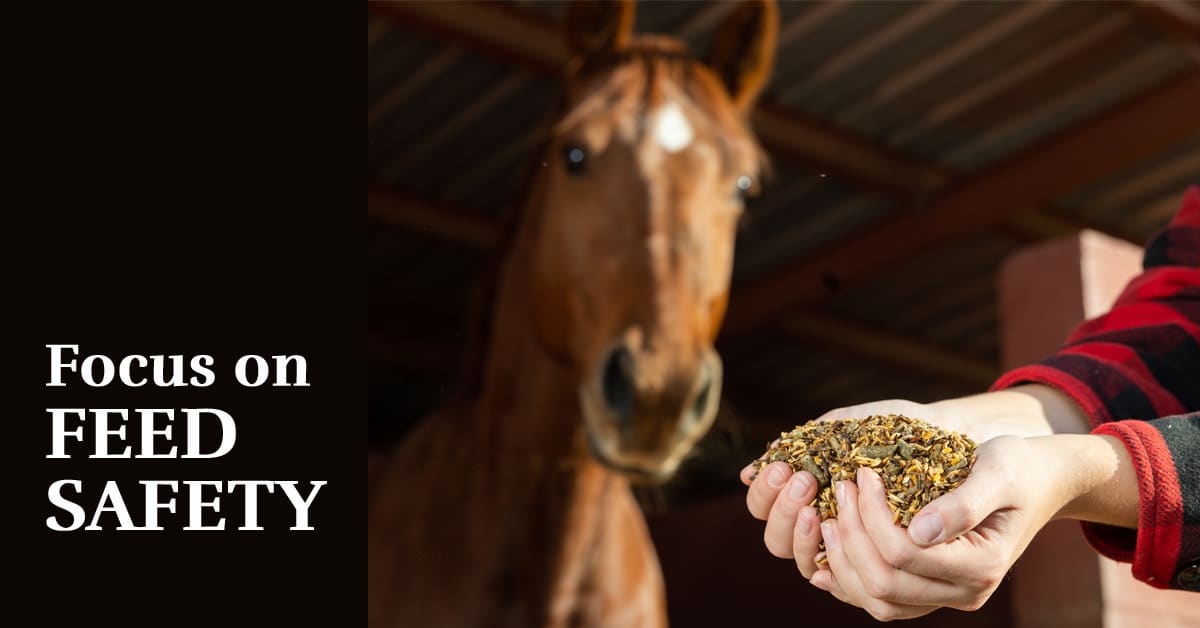Feed safety is a critical aspect of equine nutrition that can be overlooked. Various toxins and feed contaminations pose great risk to horses and can lead to negative health complications and even death.
Two potential toxins in equine hay and feed are medications such as monensin, and mycotoxins, which are compounds produced by moulds. Understanding how to mitigate the risk of these dangerous compounds is an important consideration to your horse’s feed management.
Monensin
Monensin is an ionophore antibiotic medication that is frequently included in various livestock feeds such as cattle and poultry. The toxic level for horses is very low and the prognosis upon ingestion is poor; therefore, avoiding any potential for cross contamination is crucial. (A well-publicized incident in Oklahoma last summer in which monensin-tainted feed killed 70 horses can be read here.)
If your horse is housed on a property that is shared with other livestock species, you should be aware of any medications present in the feed used. Horses sharing pasture spaces, or shared feed storage areas, increase the risk of accidentally ingesting medicated feed.
Aside from on-property contamination, contamination can also occur at the feed mill if they are producing feed for various species. Most of the time, there are strict cleaning procedures in place, but if the equipment is used for processing medicated cattle feed and then not cleaned sufficiently before producing an equine product, there can be residual traces of monensin that contaminates the product.
Best practice is to purchase horse feed from a manufacturer that has an ionophore-free facility, meaning that no ionophore antibiotics such as monensin are stored on the property or used in the equine feeds.
Some facilities may not be ionophore-free, but are considered ‘ionophore safe’, with additional precautions in place such as using a separate part of the mill for equine products to reduce the risk of contamination.
If you suspect that your horse has ingested monensin contaminated feed, your veterinarian should be contacted immediately, even if the horse is not yet showing any symptoms of illness. The clinical signs of consumption often include loss of appetite, colic, an irregular heart rate, sweating, exercise intolerance, and death.
Additionally, if contaminated feed is suspected, it is recommended to collect a few samples of the feed for laboratory analysis. The manufacturer should also be immediately contacted and provided with the batch number on the product.
Mycotoxins
Mycotoxins differ, as they are not a feed additive used for cattle and poultry, but a metabolite produced by mould. High moisture and ambient temperatures increase the risk of mycotoxins in grain, pasture and hay – which can all have detectable levels of mycotoxins that negatively impact horse health.
There are a plethora of different mycotoxins, but some of the most frequently discussed are alflatoxin B1, fumonison B1, deoxynivalenol, orchratoxin A and zearalenone. These metabolites produced by moulds are only needed in very small amounts (parts per billion) to have negative consequences for horses. Acute poisoning can occur if a large amount of mycotoxins are consumed, and chronic poisoning if small amounts are ingested over an extended period of time.
The clinical symptoms and severity of health consequences will depend on the type of mycotoxin ingested, the amount consumed, and duration of exposure. Symptoms that may present include feed refusal or decreased feed intake, behavioural changes, sweating, ataxia and blindness.
Mycotoxins in Forage
Poor weather conditions for harvesting hay, resulting in hay being baled at a higher moisture content, can lead to the development of mould and fungi in the hay which produce mycotoxins. If any hay or feed is mouldy, it should not be fed to horses.
In some cases, farmers will apply preservatives to their hay to prevent the development of mould. Most of the preservatives are organic acids (e.g., propionic acid). These organic acids are produced in the horse’s gastrointestinal tract naturally, therefore, there is no risk of health if the hay has been treated with propionic acid. It is more dangerous to feed your horse hay that has a high moisture content!
To mitigate the risk of mycotoxin poisoning, both the feed and forage should be monitored for mould development. Avoiding giving horses any feeds or forages with mould is step #1! From that point, toxin binders may be useful in some cases to mitigate the risk of health issues arising due to elevated mycotoxin levels.
Toxin Binders
Toxin binders are compounds that can be added to the horse’s feed and work by binding the toxins in the horse’s gastrointestinal tract prior to them being absorbed by the gut. Examples include yeast cell wall extract, activated carbon and clay minerals. Note that these toxin binders do not bind all mycotoxins; they only work for those that are ‘polar’ (possess an electrical charge).

There are a number of toxin binder products for equines that contains ingredients including wheat bran and germ, clay minerals, and yeast extract.
If your horse has unintended exposure to mycotoxins, adding a toxin binder to their diet can be beneficial to reduce the negative impact; however, they should not be used as a strategy to feed poor quality feed or mouldy hay.
If excessive levels of mycotoxins are suspected in feed or forage, sending a sample for laboratory testing is recommended. Prior to adding a toxin binder to your horse’s daily feed program, it is recommended to consult your veterinarian or qualified equine nutritionist.
Take-Home Message
Lurking dangers such as mycotoxins and feed contamination are scary to consider. However, taking the necessary precautions and exercising due diligence when choosing products for your horse is a great way to reduce risk.
Lastly, remember that horses do try to avoid toxic feeds, so if your horse is suddenly not wanting to consume the new bag of feed, immediately stop feeding it and contact the manufacturer to investigate further.
If you have any concerns about potential ingestion of toxic feed, contact your veterinarian immediately.
The Latest
